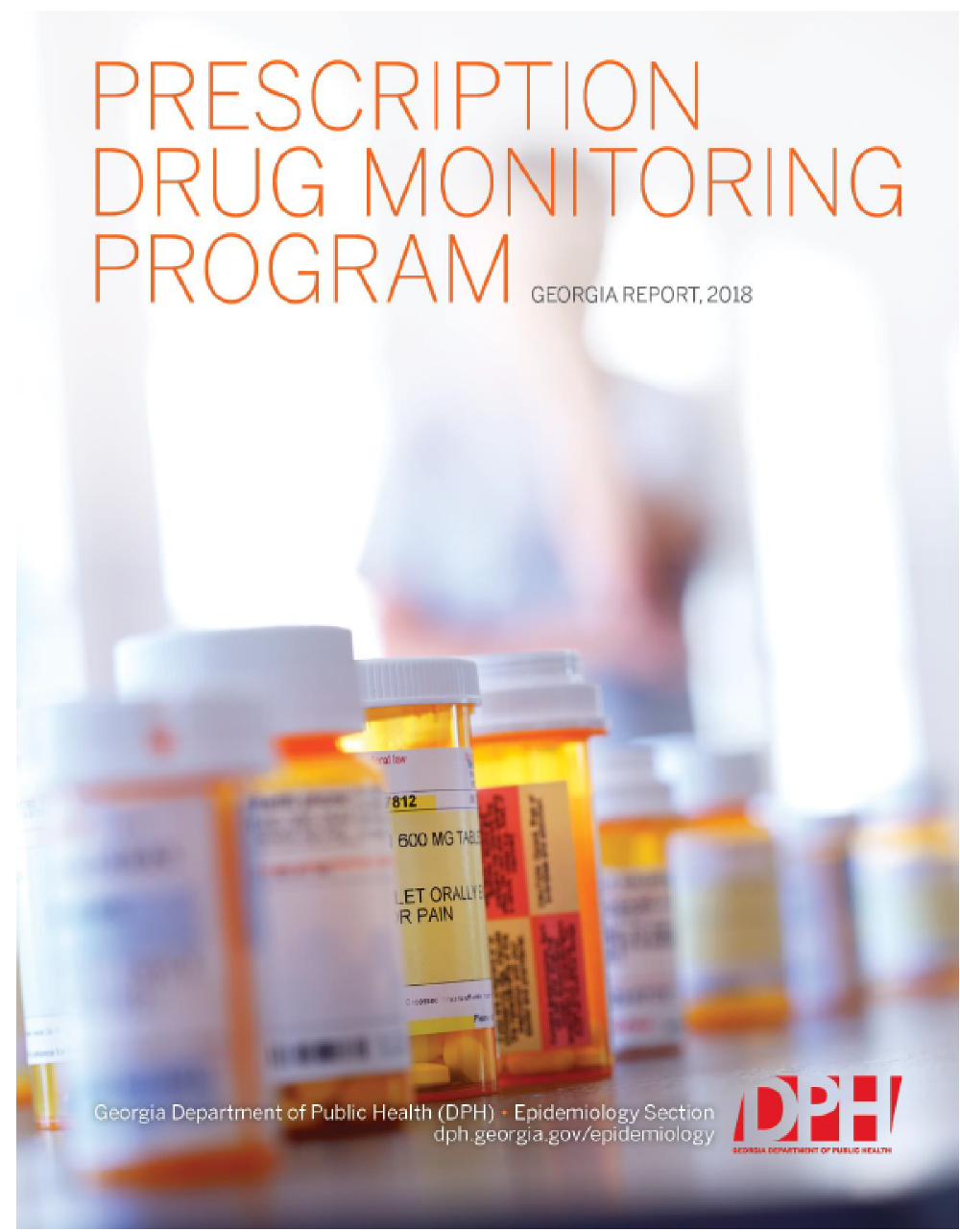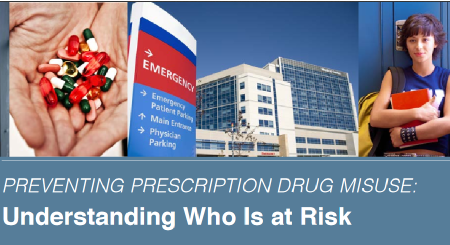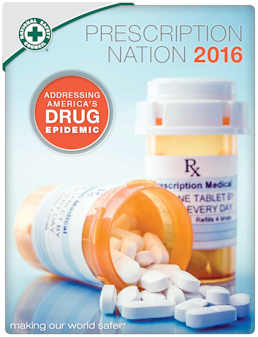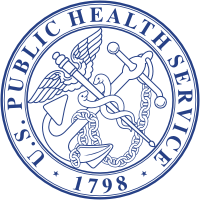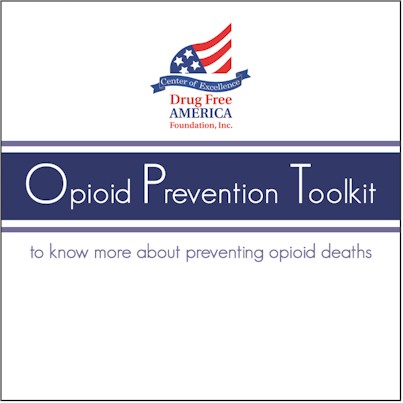The Prescription Drug Monitoring Program, Georgia Report, 2018
Issued by the Georgia Department of Public Health
Click here to review the report. The purpose of this report is to describe opioid prescribing patterns in Georgia during 2018. Prescription data from the Georgia Prescription Drug Monitoring Program (PDMP) were analyzed by the Georgia Department of Public Health (DPH) Epidemiology Program Drug Surveillance Unit. Certain prescribing practices are considered high-risk, and may predispose patients to opioid use disorder and overdose, hence contributing to the growing opioid epidemic (for more information about the opioid epidemic in Georgia, see the Georgia opioid overdose surveillance reports available at https://dph.georgia.gov/drug-surveillance-unit). These prescribing practices are presented as PDMP indicators in this report; detailed analyses of the PDMP data were conducted to measure the total number of opioid prescriptions, number of patients receiving opioids, drug type, days dispensed, and other indicators of prescribing such as overlapping opioid or opioid and benzodiazepine prescriptions.
The Georgia Opioid State Targeted Response Public Service Announcements
Good Samaritan:
The purpose of this PSA is to raise awareness for Georgia’s citizens of Georgia’s 911 Medical Amnesty Law also known as the Good Samaritan Law, which provides limited legal immunity to intoxicated individuals who seek help for themselves or others in drug-use situations. Additionally, the PSA is intended to let individuals know that it is ok to call 911 for a friend or loved one in an overdose situation. The overall goal is for people to seek help for those in an overdose situation.
911 Medical Amnesty Law: http://www.legis.ga.gov/Legislation/20132014/144369.pdf
Naloxone Availability:
The purpose of this PSA is to raise awareness for Georgia’s citizens about the standing order for naloxone, the opioid antagonist, making it available without a prescription. The law was passed in April 2017 and is known as the Jeffrey Dallas Gay Act. The overall goal of this PSA is for people to help those in an overdose situation with the use of naloxone, which can potentially reverse the overdose and save a life.
Jeffrey Dallas Gay Act: https://www.billtrack50.com/BillDetail/809120
Advocate for Self:
The purpose of this PSA is to increase awareness for Georgia’s citizens about the importance of speaking with your doctor or healthcare provider about your family history, predisposition, or any aversion you may have to taking opioids. Additionally, the PSA discusses alternatives to taking opioids such as non-opioid medications, lifestyle changes, and holistic medicine. The overall goal of this PSA is to address the opioid epidemic at its initiation in the healthcare provider’s office.
Safe Storage & Disposal:
The purpose of this PSA is to increase awareness for Georgia’s citizens about the importance of safely storing and disposing of opioids and other prescription medication. The PSA also aims to inform that safe storage and disposal can decrease access to opioids for those who may have a problem with them. The overall goal of this PSA is to address the opioid epidemic by decreasing access to opioids and other prescription drugs via safe storage and disposal of medication.
More Drugs Is Not The Answer To The Opioid Epidemic & Here Is Why
Marijuana
One Pagers:
- Link to our Big Marijuana exploiting the Opioid Crisis one pager that we sent to legislators in states that are trying to approve marijuana as a treatment for opioid dependence: https://www.dfaf.org/wp-content/uploads/2018/08/Big-Marijuana-moves-to-exploit-the-Opioid-Epidemic.pdf
- One pager from SAM on the MJ and Opioid issue: https://learnaboutsam.org/wp-content/uploads/2017/09/27Sep2017-opioids-one-pager.pdf
Editorial:
It is premature to expand access to medicinal cannabis in hopes of solving the US opioid crisis https://onlinelibrary.wiley.com/doi/full/10.1111/add.14139
Research:
- Study found that marijuana use over four years actually made it harder for patients to cope with chronic pain, and did not reduce their use of opioids. https://www.thelancet.com/pdfs/journals/lanpub/PIIS2468-2667(18)30110-5.pdf
- increasing self-exposure to non-medical marijuana was a predictor of greater odds of opioid dependence diagnosis https://www.ncbi.nlm.nih.gov/m/pubmed/29997535/?i=30&from=marijuana
- Marijuana use is associated with an increased risk of prescription opioid misuse and use disorders https://www.drugabuse.gov/news-events/news-releases/2017/09/marijuana-use-associated-increased-risk-prescription-opioid-misuse-use-disorders
Also, DFAF is currently running PSAs in 21 states for the next 10 weeks that have a marijuana opioid connection message. Below are the ads.
- Full PSA (https://youtu.be/W7LhAI5WsCI)
- 30 Second PSA (https://youtu.be/zg4qJwP1U2M)
Fentanyl
What is Fentanyl?
Fentanyl is a potent synthetic opioid analgesic that is similar to morphine but 50-100 times more powerful. It is a schedule II prescription drug typically used to treat patients with severe pain or to manage pain after surgery. When prescribed by a physician, fentanyl is administered through an injection, transdermal patch, or in lozenges. However, the fentanyl on the streets that has been associated with the recent surge of overdoses, are produced in clandestine laboratories. It is often sold as a powder, mixed with heroin, or as tablets that resemble other less potent opioids. People tend to swallow, snort, or inject fentanyl. Like other opioids, fentanyl works by binding to the body’s opioid receptors. When this happens, it increases dopamine levels in the brain’s reward areas, producing a state of euphoria and relaxation.
Fentanyl Street Names
It is often sold as a powder, mixed with heroin, or as tablets that resemble other less potent opioids. People tend to swallow, snort, or inject fentanyl. Like other opioids, fentanyl works by binding to the body’s opioid receptors. When this happens, it increases dopamine levels in the brain’s reward areas, producing a state of euphoria and relaxation.
The following names are common street names used for Fentanyl:
Captain Cody, Cody, Schoolboy, Doors & Fours, Pancakes & Syrup, Loads, Miss Emma, Monkey, White Stuff, Demmies, Pain killer, Apache, China girl, Dance fever, Goodfella, Murder 8, Tango and Cash, China white, Friend, Jackpot, TNT, Oxy 80, Oxycat, Hillbilly heroin, Percs, Perks, Juice, Dilli
Why Is Fentanyl So Dangerous?
Fentanyl is 50 times more potent than heroin, making it a very powerful drug. Opioid receptors are found in the areas of the brain that control breathing rate. Large doses of opioids, especially one as potent as fentanyl, can cause breathing to stop completely, leading to death. The high potency of fentanyl greatly increases the risk of overdose, particularly if the user is unaware that a pill or powder contains fentanyl. The fentanyl being sold on the street can be mixed with heroin or cocaine, which amplifies its potency and danger. Fentanyl overdoses must be treated immediately with Narcan and may require higher doses to reverse the overdose. The drug is more lethal to potential users than other illicit drugs due to its very small lethal dose.
The United States is currently in the midst of a fentanyl crisis. Law enforcement reports and public health data indicate higher availability, increased seizures, and more known overdose deaths from fentanyl than at any other time since the drug was first developed in 1959. Overdose deaths attributed to fentanyl have been on the rise in recent years because many do not know that they are ingesting the drug.
Documentary on Fentanyl and Opioids
Documentary on Fentanyl and Opioids produced by the regional Safe Communities Coalition of Hunterdon/Somerset Counties New Jersey. Overdoses due to Fentanyl mixing with Heroin, Prescription Drugs, Cocaine and other substances. www.safecoalition.org
Kratom
What is Kratom?
Kratom is a tropical tree (Mitragyna speciosa) native to Southeast Asia, with leaves that contain compounds that can have psychotropic (mind-altering) effects.
Kratom is not currently an illegal substance and has been easy to order on the internet. It is sometimes sold as a green powder in packets labeled "not for human consumption." It is also sometimes sold as an extract or gum.
Kratom sometimes goes by the following names:
- Biak
- Ketum
- Kakuam
- Ithang
- Thom

How do people use Kratom?
Most people take kratom as a pill, capsule, or extract. Some people chew kratom leaves or brew the dried or powdered leaves as a tea. Sometimes the leaves are smoked or eaten in food.
How does Kratom affect the brain?
Kratom can cause effects similar to both opioids and stimulants. Two compounds in kratom leaves, mitragynine and 7-α-hydroxymitragynine, interact with opioid receptors in the brain, producing sedation, pleasure, and decreased pain, especially when users consume large amounts of the plant. Mitragynine also interacts with other receptor systems in the brain to produce stimulant effects. When kratom is taken in small amounts, users report increased energy, sociability, and alertness instead of sedation. However, kratom can also cause uncomfortable and sometimes dangerous side effects.
What are the health effects of Kratom?
Reported health effects of kratom use include:
- nausea
- itching
- sweating
- dry mouth
- constipation
- increased urination
- loss of appetite
- seizures
- hallucinations
Symptoms of psychosis have been reported in some users.
Can a person overdose on Kratom?
In 2017, the Food and Drug Administration (FDA) began issuing a series of warnings about kratom and now identifies at least 44 deaths related to its use, with at least one case being investigated as possible use of pure kratom. Most kratom associated deaths appear to have resulted from adulterated products (other drugs mixed in with the kratom) or taking kratom along with other potent substances, including illicit drugs, opioids, benzodiazepines, alcohol, gabapentin, and over-the-counter medications, such as cough syrup. Also, there have been some reports of kratom packaged as dietary supplements or dietary ingredients that were laced with other compounds that caused deaths.
Is Kratom addictive?
Like other drugs with opioid-like effects, kratom might cause dependence, which means users will feel physical withdrawal symptoms when they stop taking the drug. Some users have reported becoming addicted to kratom. Withdrawal symptoms include:
- muscle aches
- insomnia
- irritability
- hostility
- aggression
- emotional changes
- runny nose
- jerky movements
How is Kratom addiction treated?
There are no specific medical treatments for kratom addiction. Some people seeking treatment have found behavioral therapy to be helpful. Scientists need more research to determine how effective this treatment option is.
Does Kratom have value as a medicine?
In recent years, some people have used kratom as an herbal alternative to medical treatment in attempts to control withdrawal symptoms and cravings caused by addiction to opioids or to other addictive substances such as alcohol. There is no scientific evidence that kratom is effective or safe for this purpose; further research is needed.
To learn more about Kratom visit: https://www.drugabuse.gov/publications/drugfacts/kratom
Prescription Drug Abuse Prevention Education
A crucial first step in tackling the problem of prescription drug abuse is to educate every sector of our state about the dangers of misusing[1] and abusing such drugs.
In most cases it is not a lack of information that creates a gap in people’s knowledge it is the orientation and relationship to prescription drugs that create an environment in which we think we have no choice but to misuse and abuse these drugs. The education that will be provided by the Georgia Prescription Drug Abuse Prevention Initiative (GPDAPI) will be researched-based and directed toward empowering the learner to take action on solutions to preventing prescription drug misuse and abuse.
The prescription drug epidemic that we find ourselves in is simply a product of a social norm of our society that there is no pain or discomfort that cannot be gotten rid of by a pill or some other type of drug. When the citizenry decides that the prevention of prescription drug abuse is about taking more personal responsibility for the state of our own well-being and limiting the ingestion of prescription drugs to those that are absolutely necessary to take, then and only then will we see begin to see a significant decrease in the epidemic we find ourselves facing going into the future.
This is by no means to deny the very positive results of some prescription drugs to reduce the often intense and chronic physical and/or mental suffering that certain people might otherwise experience. The use of such drugs have meant that people have been able to live their lives relatively free from the physical or mental dysfunction or anguish that otherwise would mean a relatively limited life.
There are many government and private agencies involved in educating the public about prescription drug misuse and abuse including the Substance Abuse and Mental Health Services Administration (SAMHSA), the Food and Drug Administration (FDA), the Office of National Drug Control Policy (ONDCP), the Drug Enforcement Agency (DEA), the National Institutes of Health (NIH), Narconon International, Community Anti-Drug Coalitions of America (CADCA), and National Families in Action (NFIA). All of these education efforts seek to educate patients and the general public about the appropriate use, safe storage, and secure disposal of prescription drugs. They also seek to educate people about the risks associated with misuse and abuse of prescription drugs.
Below are resources that are available to educate the general public, youth, adults, and seniors about the dangers of misusing and abusing prescription drugs.
[1] Misuse of prescription drugs is defined as the use of prescription drugs without a prescription or use that occurred simply for the experience or feeling the drug caused. National Survey on Drug Use and Health. Nonmedical Use of Pain Relievers in Substate Regions: 2004 to 2006. 2008. Available at: http://www.samhsa.gov/data/2k8/pain/substate.htm. Accessed March 23, 2012.
The nonmedical use of prescription drugs (NMUPD) has become an increasing public health concern in the United States, with abuse rates rising rapidly since the late 1990s. Yet preventing and reducing prescription drug misuse represents a major challenge for several reasons. The factors included in this tool have been organized according to the socio-ecological model, a multi-level framework that allows us to consider the different contexts in which risk and protective factors exist. Click Here to view this guide.
Preventing Prescription Drug Abuse
Adverse childhood experiences (ACEs) are stressful or traumatic events, including abuse and neglect. They may also include household dysfunction such as witnessing domestic violence or growing up with family members who have substance use disorders. ACEs are strongly related to the development and prevalence of a wide range of health problems throughout a person’s lifespan, including those associated with substance misuse.
ACEs include:
- Physical abuse
- Sexual abuse
- Emotional abuse
- Physical neglect
- Emotional neglect
- Intimate partner violence
- Mother treated violently
- Substance misuse within household
- Household mental illness
- Parental separation or divorce
- Incarcerated household member
ACEs are a good example of the types of complex issues that the prevention workforce often faces. The negative effects of ACEs are felt throughout the nation and can affect people of all backgrounds. Successfully addressing their impact requires:
- Assessing prevention needs and gathering data
- Effective and sustainable prevention approaches guided by applying the Strategic Prevention Framework (SPF)
- Prevention efforts aligned with the widespread occurrence of ACEs
- Building relationships with appropriate community partners through strong collaboration

Download the Adverse Childhood Experiences Pyramid graphic (JPG | 68 KB).
Many studies have examined the relationship between ACEs and a variety of known risk factors for disease, disability, and early mortality. The Division of Violence Prevention at the Centers for Disease Control and Prevention (CDC), in partnership with Kaiser Permanente, conducted a landmark ACE study from 1995 to 1997 with more than 17,000 participants. The study found:
- ACEs are common. For example, 28% of study participants reported physical abuse and 21% reported sexual abuse. Many also reported experiencing a divorce or parental separation, or having a parent with a mental and/or substance use disorder.
- ACEs cluster. Almost 40% of the Kaiser sample reported two or more ACEs and 12.5% experienced four or more. Because ACEs cluster, many subsequent studies now look at the cumulative effects of ACEs rather than the individual effects of each.
- ACEs have a dose-response relationship with many health problems. As researchers followed participants over time, they discovered that a person’s cumulative ACEs score has a strong, graded relationship to numerous health, social, and behavioral problems throughout their lifespan, including substance use disorders. Furthermore, many problems related to ACEs tend to be comorbid or co-occurring.
ACEs and Prevention Efforts
Preventing ACEs and engaging in early identification of people who have experienced them could have a significant impact on a range of critical health problems. You can strengthen your substance misuse prevention efforts by:
- Informing local decision-making by collecting state- and county-level ACEs data
- Increasing awareness of ACEs among state- and community-level substance misuse prevention professionals, emphasizing the relevance of ACEs to behavioral health disciplines
- Including ACEs among the primary risk and protective factors when engaging in prevention planning efforts
- Selecting and implementing programs, policies, and strategies designed to address ACEs, including efforts focusing on reducing intergenerational transmission of ACEs
- Using ACEs research and local ACEs data to identify groups of people who may be at higher risk for substance use disorders and to conduct targeted prevention
ACEs Research and Behavioral Health
Research has demonstrated a strong relationship between ACEs, substance use disorders, and behavioral problems. When children are exposed to chronic stressful events, their neurodevelopment can be disrupted. As a result, the child’s cognitive functioning or ability to cope with negative or disruptive emotions may be impaired. Over time, and often during adolescence, the child may adopt negative coping mechanisms, such as substance use or self-harm. Eventually, these unhealthy coping mechanisms can contribute to disease, disability, and social problems, as well as premature mortality.
ACEs and Substance Use
- Early initiation of alcohol use. Efforts to prevent underage drinking may not be effective unless ACEs are addressed as a contributing factor. Underage drinking prevention programs may not work as intended unless they help youth recognize and cope with stressors of abuse, household dysfunction, and other adverse experiences. Learn more from a 2008 study on how ACEs can predict earlier age of drinking onset. (link is external)
- Higher risk of mental and substance use disorders as an older adult (50+ years). ACEs such as childhood abuse (physical, sexual, psychological) and parental substance abuse are associated with a higher risk of developing a substance use disorder. Learn more from a 2017 study on adverse childhood experiences and mental and substance use disorders as an adult (link is external).
- Continued tobacco use during adulthood. Prevalence ratios for current and ever smoking increased as ACEs scores increased, according to a 2011 study on ACEs and smoking status.
- Prescription drug use. For every additional ACE score, the rate of number of prescription drugs used increased by 62%, according to a 2017 study of adverse childhood experiences and adolescent prescription drug use. (link is external)
- Lifetime illicit drug use, drug dependency, and self-reported addiction. Each ACE increased the likelihood of early initiation into illicit drug use by 2- to 4-fold, according to a 2003 study on childhood abuse, neglect, and household dysfunction and the risk of illicit drug use.
ACEs and Behavioral Problems
- Suicide attempts. ACEs in any category increased the risk of attempted suicide by 2- to 5-fold throughout a person’s lifespan, according to 2001 study. According to a recent 2017 article (link is external), individuals who reported 6 or more ACEs had 24.36 times increased odds of attempting suicide.
- Lifetime depressive episodes. Exposure to ACEs may increase the risk of experiencing depressive disorders well into adulthood—sometimes decades after ACEs occur. Learn more from a 2015 study on ACEs and the risk of geriatric depressive disorders.
- Sleep disturbances in adults. People with a history of ACEs have a higher likelihood of experiencing self-reported sleep disorders, according to a 2015 systematic review of research studies on ACEs and sleep disturbances in adults.
- High-risk sexual behaviors. Women with ACEs have reported risky sexual behaviors, including early intercourse, having had 30 or more sexual partners, and perceiving themselves to be at risk for HIV/AIDS. Learn more from a 2001 study on ACEs and sexual risk behaviors in women. Sexual minorities who experience ACEs also demonstrate earlier sexual debut according to a 2015 study.
- Fetal mortality. Fetal deaths attributed to adolescent pregnancy may result from underlying ACEs rather than adolescent pregnancy, according to a 2004 study of the association between ACEs and adolescent pregnancy.
- Pregnancy outcomes. Each additional ACE a mother experienced during early childhood is associated with decreased birth weight and gestational age of her infant at birth, according to a 2016 study on the association between ACEs and pregnancy outcomes
Publications and Resources
- Archived Webinar: Trauma & Adverse Childhood Experiences: Implications for Preventing Substance Misuse
- The Role of Adverse Childhood Experiences in Substance Abuse and Related Behavioral Health Problems
- Adverse Childhood Experiences: Risk Factors for Substance Abuse and Mental Health Video – 2012
- Adverse Childhood Experiences: Implications for Transforming Our Systems of Care Video – 2012
How Addiction Happens
Nationwide Efforts
Opioid Overdose Rescue: 3 STEPS TO SAVE A LIFE by OpioidOverdoseRescue.com
Overdose is a medical emergency. Signs of overdose include being unresponsive, making gurgling/snore-like sounds, breathing that is very slow, shallow, or the person is not breathing at all. The victim’s face make be pale or ashen, fingernails and lips may be blue and the heartbeat may be slow, erratic or non-existent. If you have reason to suspect opioid overdose, your quick action can save a life.
You can help lower the tragic death rate from drug overdose by learning the Three Steps to Save a Life, and telling your friends and family members to do the same.
Learning these Three Steps is especially important if:
- Someone you know is taking opioid pain medications or using illegal opioids
- Someone you know is recovering from opioid addiction, because if the person relapses, his or her tolerance will be less so the person is at a greater risk of overdose

Many states, like Georgia, have Medical Amnesty Laws which can give amnesty from arrest for both the caller and the victim in the case of a medical emergency, so don’t be afraid to call for help.

Many states have made Naloxone available without an individual prescription. Ask for it at your local pharmacy.

Rescue breathing and chest compressions can keep oxygenated blood flowing. Good Samaritan laws protect the good faith efforts of those trying to save a life in an emergency. Just do your best.
National Safety Council - State Evaluations
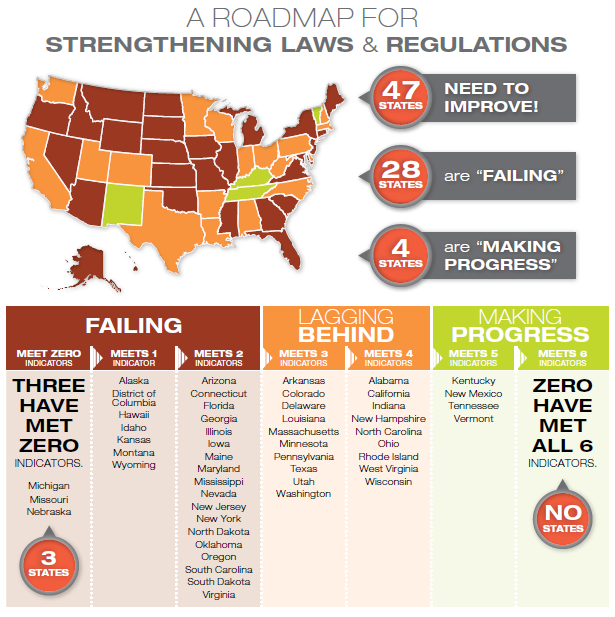
National Safety Council - Prescription Nation 2016 Addressing America's Drug Epidemic
Executive Summary
This is the most fatal drug crisis on record in United States history, and too many families and communities are left to suffer in its path. These highly addictive medicines have been incorrectly marketed as the most effective method for treating pain and, subsequently, liberally prescribed. Prescription opioids also serve as gateway drugs to heroin, which has a nearly identical chemical makeup and is cheaper and sometimes easier to obtain.
The facts are clear:
- More than 259 million opioid prescriptions were written in 2012
- 1.9 million Americans are addicted to opioid painkillers
- The U.S. makes up 4.6 percent of the world’s populations but consumes 81 percent of the world supply of oxycodone
- 4.3 million adolescents and adults reported non-medical use of prescription opioids in 2014
- 4 out of 5 heroin users started on prescription opioids
Partnership for Drug-Free Kids

HEROIN AND OTHER OPIOIDS: “From Understanding to Action”
Heroin and other opioids are ravaging communities across America. Deaths from heroin increased 248% between 2010 and 2014. More Americans die from drug overdoses than in car crashes, and this increasing trend is driven by Rx painkillers. To see and read more about this epidemic and what you can do about it please Click Here (http://www.drugfree.org/heroin).
Prescription Sedatives & Tranquilizers
What are sedatives & tranquilizers? They are prescription medications that act as central nervous system depressants. Barbiturates are prescription sedatives or “sleeping pills” and benzodiazepines are prescription tranquilizers. Want to learn more of the facts CLICK HERE! (https://drugfree.org/drug/prescription-sedatives-tranquilizers)
General Public Websites
SAMHSA’s Rx Drug Abuse Prevention Grantee Stories, Tools, and Other Resources
Surgeon General’s Spotlight on Opioids
Click Here to read the Surgeon General’s Spotlight on Opioids, FACING ADDICTION IN AMERICA. This publication is a comprehensive report on the state of the public health crisis that the opioid epidemic has created across the United States. The report outlines the struggles of individuals, families, communities, and health care providers dealing and trying to cope with the opioid crisis. Opioid misuse and opioid use disorders have devastating and log lasting effects on every level of society. The most devasting of all are overdose deaths, lives end prematurely and tragically. The Surgeon General points out in the report that, “other serious consequences include neonatal abstinence syndrome and transmission of infectious diseases such as HIV and viral hepatitis, as well as compromised physical and mental health. Social consequences include loss of productivity, increased crime and violence, neglect of children, and expanded health care costs.” Click Here to read the full Report.

SAMHSA Rx Prevention Tools
Click Here to discover Rx drug abuse prevention grantee stories, tools, videos, and other resources to support your prevention efforts. The site has 5 fantastic resources you can view from a 1 hour webinar on “Preventing Prescription Abuse in the Workplace” to a webinar on “Preventing the Nonmedical Use of Prescription Drugs: Using the PDMP and Other Strategies for Success”.

Drug Free America Foundation
Drug Free America Foundation is proud to promote the Generation Rx Initiative which began at The Ohio State University College of Pharmacy in 2007 as a program to enhance medication safety and combat the increasing misuse and abuse of prescription drugs through educational prevention. Partnering with the Cardinal Health Foundation, the program has created toolkits aimed at specific audiences that are available to the public at no cost. There are a toolkit for elementary, teen, college, community, patient, and senior. Something for everybody. To view and utilize all six toolkits Click HERE!
Opioid Tool Kit
The Opioid Tool Kit has been designed to educate people about the opioid epidemic and offer strategies that can be used to address this crisis. “The Tool Kit is also intended to encourage collaboration with different community sectors and stakeholders to make successful and lasting change,”. It is a comprehensive guide that defines what an opioid is, examines the scope of the problem, and addresses why opioids are a continuing health problem. The Tool Kit also provides strategies for the prevention of prescription drug misuse and overdose deaths and includes a community advocacy and action plan, as well as additional resources. To learn more Click HERE!
National Rx Drug Abuse Summit
If you have missed the previous five National Rx Drug Abuse & Heroin Summits then don’t miss the next one! The 2017 National Rx Drug Abuse & Heron Summit will be held at the Westin Peachtree Plaza in Atlanta on April 17th through the 20th. Stay tuned RIGHT HERE for online registration. The Summit is the largest national collaboration of professionals from local, state and federal agencies, business, academia, clinicians, treatment providers, counselors, educators, state and national leaders, and advocates impacted by Rx drug abuse and heroin use. Join your colleagues, sponsors and exhibitors at the 2017 National Rx Drug Abuse & Heroin Summit . Workshop sessions at the Summit were organized into seven Educational Tracks tailored to provide stakeholders timely and relevant information for their particular field: Clinical, Education & Advocacy, Law Enforcement, Pharmacy, Prescription Drug Monitoring Programs, Third-Party Payer, or Treatment. The presenters for the workshop sessions included the best of the best in the field of Rx Drug Abuse Prevention, Intervention, and Treatment.
The National Rx Drug Abuse Summit drew approximately 2,100 participants from 49 states, the District of Columbia, Canada and New Zealand. The Summit is the largest national collaboration of professionals from local, state and federal agencies, business, academia, clinicians, treatment providers, counselors, educators, state and national leaders, and advocates impacted by Rx drug abuse. Through this type of collaboration, your work can be more impactful in bringing solutions to this issue that the Centers for Disease Control and Prevention (CDC) declared a public health crisis in 2012.
General Audience PowerPoint - Prescription Drug Abuse: It’s Not What the Doctor Ordered
CLICK HERE to download the Georgia Prescription Drug Abuse Prevention Initiative Training PowerPoint designed to be used by anyone wishing to learn more or teach others about prescription drug abuse in Georgia and how to prevent it.
Attorney General of Georgia, Sam Olens
This website has useful information on the prescription drug abuse issue as it pertains to Georgia. To read more please click here: http://law.ga.gov/00/channel_title/0,2094,87670814_177825814,00.html
U.S. National Institute on Drug Abuse (NIDA)
NIDA defines prescription drug abuse as “taking a prescription medication that is not prescribed for you, or taking it for reasons or in dosages other than as prescribed.” Abuse of prescription drugs can produce serious health effects, including addiction. Commonly abused classes of prescription medications include opioids (for pain), central nervous system depressants (for anxiety and sleep disorders), and stimulants (for ADHD and narcolepsy). To read further please click here: http://www.drugabuse.gov/drugs-abuse/prescription-medications
A second NIDA website named “NIDAMED” contains a multitude of information for Medical & Health Professionals. To learn more about the information that NIDAMED has made available please Click Here.
National Council on Patient Information and Education (NCPIE)
“EDUCATE before YOU MEDICATE”
One of the original patient safety coalitions, NCPIE has been working to advance the safe, appropriate use of medicines through enhanced communication since 1982. To read more about NCPIE please click here: http://www.talkaboutrx.org/a_user_registration.jsp
School Based Rx Drug Prevention Education Lessons
Substance Abuse Prevention and Education
http://www.gadoe.org/External-Affairs-and-Policy/Pages/Substance-Abuse-Prevention-and-Education.aspx
As you know, Georgia law (O.C.G.A. § 20-2-144) requires schools to provide drug and alcohol instruction for grades K-12. That law is posted below.
§ 20-2-144. Mandatory instruction concerning alcohol and drug use
(a) Each local board of education shall prescribe mandatory instruction concerning alcohol and other drug use in every year in every grade from kindergarten through grade 12 as shall be determined by the State Board of Education. Such course of study shall implement the minimum course of study provided for in subsection (b) of this Code section or its equivalent, as approved by the State Board of Education. Each local board of education may supplement the exact approach of content areas of such minimum course of study with such curriculum standards as it may deem appropriate. Such standards shall include instruction which discourages the use of alcohol, tobacco, and controlled substances and communicates that the use of illicit drugs and improper use of legally obtained drugs is wrong and dangerous.
(b) The State Board of Education shall prescribe a minimum course of study of alcohol and other drug use which may be included as a part of a course of study in comprehensive health education where offered and where appropriate. Instruction also shall be integrated into other curriculum requirements as determined by the State Board of Education. The course shall be age appropriate, shall be sequential in method of study, and shall include the following elements where appropriate in the instruction:
(1) Detailed, factual information regarding physiological, psychological, sociological, and legal aspects of substance abuse;
(2) Detailed information concerning the availability of help and assistance for persons with chemical dependency problems;
(3) Skills needed to evaluate advertisements for, and media portrayals of, alcohol, tobacco, and controlled substances; and
(4) Detailed instruction on the need for, and role of, lawful authority and law-abiding behavior, which instruction may include interacting and working with members of the legal and justice professions.
(c) A manual setting out the details of such course of study shall be prepared by or approved by the State School Superintendent in cooperation with the Department of Public Health, the State Board of Education, the Department of Public Safety, and such expert advisers as they may choose.
(d) The minimum course of study to be prescribed by the State Board of Education pursuant to subsection (b) of this Code section shall be ready for implementation not later than July 1, 1990. Each local board shall implement either such minimum course of study or its equivalent not later than December 31, 1990. Any local board of education which fails to comply with this subsection shall not be eligible to receive any state funding under this article until such minimum course of study or its equivalent has been implemented.
HISTORY: Code 1981, § 20-2-144, enacted by Ga. L. 1990, p. 2043, § 1; Ga. L. 2009, p. 453, § 1-4/HB 228; Ga. L. 2011, p. 705, § 6-3/HB 214.
The Prescription Drug Safety Program - Digital Course For High Schools
National Family Partnership is a proud partner of the Prescription Drug Safety Network, a nationwide coalition committed to empowering students with skills to help make safe and healthy decisions about prescription drug use for themselves, their families, and their communities.
National Education Association (NEA) Rx Prevention Resources
The National Education Association (NEA) offers an online resource of three sets of school-based Rx Drug Abuse Prevention Lessons for 5th grade through the 12th grade to be facilitated by the teacher in her/his classroom.
Lesson Plans for 5th - 8th grades click on this link: Rx for Understanding: Be Smart About Prescription Drugs
Lesson Plans for 9th - 12th grades click here: Rx for Understanding: Preventing Prescription Drug Abuse
The lessons were developed by the NEA Health Information Network (NEA HIN www.neahin.org) which is a non-profit health and safety organization closely aligned with the NEA. NEA HIN is a non-profit that offers information, programs, services, and policies that improve the health and safety of NEA members and the students they serve. The HIN serves as the “go to” place on issues of health and safety. NEA HIN works with all their partners and affiliates to provide school communities with vital and timely information that supports successful learning environments and student achievement.
NAE HIN offers two resources to help educate young people about the misuse, abuse, and proper use of prescription drugs. The first is called, “Rx for Understanding: Be Smart About Prescription Drugs.” It is a standards-based cross-curricular teaching resource geared for students in grades 5-8. This resource contains five sequenced lessons for grades 5-6 and five sequenced lessons for grades 7-8. Each lesson acts as a mini-unit focusing on these same five lesson themes:
1.Relating the issue of prescription drug safety to overall health
5.Conducting an application-based culminating project
Rx for Understanding: Be Smart About Prescription Drugs has a an Educator’s Resource Guide for grades 5-8 which includes background information, lesson plans, reproducible student activity sheets, parent information, and national academic standards alignment charts (including National Health Education Standards and Common Core State Standards).
The second of the two resources is “Rx for Understanding: Preventing Prescription Drug Abuse” is a standards-based, cross-curricular teaching resource geared for students in grades 9-12. It contains 10 lessons that lead students through an inquiry-based, technology inspired project enabling an opportunity to apply the key concepts learned about the misuse, abuse, and proper use of prescription drugs. It too has an Educator’s Resource Guide that includes background information, lesson plans, a reproducible student journal, teaching resources, parent information, and national academic standards alignment charts (including National Health Education Standards and Common Core State Standards).
Please click on any of the links that are of interest to you and download a free PDF copy of the material and lessons.
Not Prescribed
What is Not Prescribed?
The Not Prescribed Lesson provides teens in middle and high schools with the science and the stories to understand the risks of misusing & abusing prescription drugs and the tools and resources to manage their own health as well as advocate for their peers’ health. This standards-based lesson leverages personal testimony from teens and their families through compelling videos and provides educators with a science-based interactive presentation to facilitate conversation and learning. For additional information or questions, please contact info@georgiapreventionproject.org
Youth
This website is dedicated to educating people about youth dying from drug abuse. To read further please click here: www.friendsdontletfriendsdie.com/index.shtml
NIDA for Teens – The Science behind Drug Abuse
PEERx
PEERx is a website learning library that is dedicated to TEENS. This website provides a wealth of information in a teen friendly way. The information is geared to explaining to TEENs that there is a reason that prescription drugs are intended to be taken under the direction of a doctor: when used improperly they can be dangerous. The information presented gives the science behind the facts-- that prescription drugs can have devastating affects over the short and long term. TEENS get it straight from science that there are short term consequences like unpredictable accidental death to long-term health consequences when prescription drugs are used incorrectly or abuse by some. To read more please click here: http://www.teens.drugabuse.gov/peerx/partner-toolkit/
GenerationRx Challenge
The objectives of the Youth GenerationRx Challenge are to increase awareness about the dangers of prescription drug abuse and misuse and encourage action. It can be as simple as having a conversation with others or partnering with a local pharmacist or other health professional to educate the members of your community. Click here to register and receive a downloadable GenerationRx Challenge Youth Tool Kit: http://cardinalhealth.com/us/en/generationrx
CSN Resource Guide on Medication Abuse Prevention
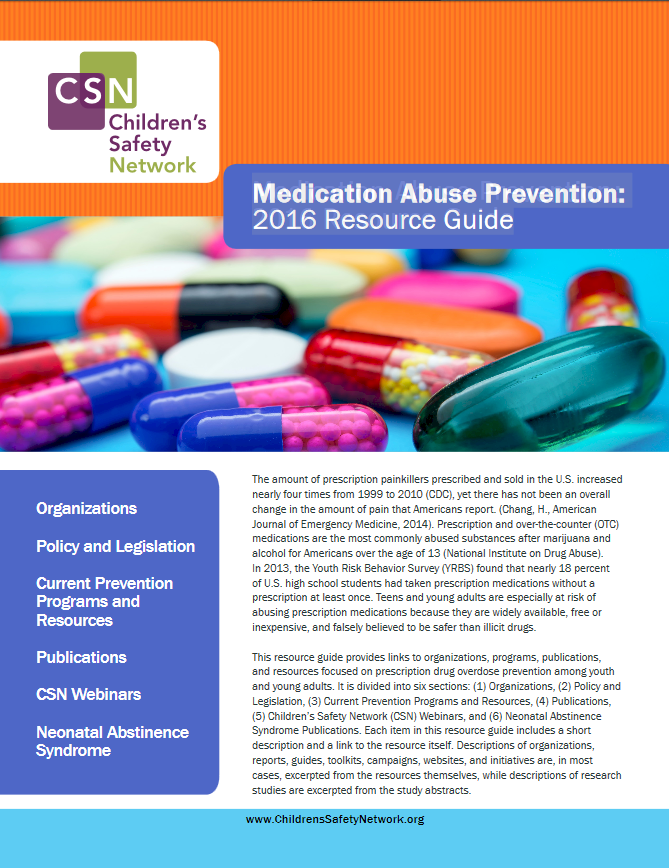
The amount of prescription painkillers prescribed and sold in the U.S. increased nearly four times from 1999 to 2010 (CDC), yet there has not been an overall change in the amount of pain that Americans report. (Chang, H., American Journal of Emergency Medicine, 2014). Prescription and over-the-counter (OTC) medications are the most commonly abused substances after marijuana and alcohol for Americans over the age of 13 (National Institute on Drug Abuse). In 2013, the Youth Risk Behavior Survey (YRBS) found that nearly 18 percent of U.S. high school students had taken prescription medications without a prescription at least once. Teens and young adults are especially at risk of abusing prescription medications because they are widely available, free or inexpensive, and falsely believed to be safer than illicit drugs.
This resource guide provides links to organizations, programs, publications, and resources focused on prescription drug overdose prevention among youth and young adults. It is divided into six sections: (1) Organizations, (2) Policy and Legislation, (3) Current Prevention Programs and Resources, (4) Publications, (5) Children's Safety Network (CSN) Webinars, and (6) Neonatal Abstinence Syndrome Publications. Click Here to read the Medication Abuse Prevention: 2016 Resource Guide.
Prescription drug abuse means using a medication in a different way than how it should be used, including using greater amounts than prescribed. Even if a medicine is specifically prescribed for you, if you don’t follow the instructions for using it safely, it may have the potential to be misused. But taking medicine that wasn’t prescribed for you at all is abuse. It’s no different than abusing alcohol or illicit drugs. Click Here to learn more.
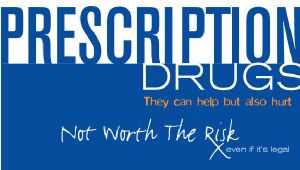
Adults
Not My Family
This is the first forum in the series "NOT MY FAMILY." Learn more about the epidemic facing our families, why it is occurring, and what you can do to stop it. ** This forum is brought to you by a partnership of agencies and community members dedicated to providing the Hall County community with information, resources, and actions to address the drug problems of Hall County.
GenerationRx Challenge
The Adult GenerationRx Challenge toolkit contains PowerPoint slides, a handout, videos, a quiz and other materials needed to easily make a short (15-20 minute) presentation to adults in community-based groups to raise awareness of the scope and consequences of the misuse and abuse of prescription medications. Click here to register and receive a downloadable GenerationRx Adult Educational Toolkit: http://cardinalhealth.com/us/en/generationrx
“EDUCATE before YOU MEDICATE”

One of the original patient safety coalitions, NCPIE has been working to advance the safe, appropriate use of medicines through enhanced communication since 1982. This website highlights the need to take action to prevent & address prescription drug abuse on College Campuses. To read more about what NCPIE is doing on College Campuses please click here: http://www.talkaboutrx.org/rx_program.jsp
“Drug Dangers”
“Drug Dangers” is a website that was developed to educate the public about the dangers of certain pharmaceutical drugs. Their goal, as is ours at The Council on Alcohol and Drugs, are to keep the public educated and informed of the dangers of medications that are currently available on the market today. As we all know just because the doctor prescribes the medication and the pharmacy dispenses it DOESN’T MEAN IT IS FREE FROM DOING US HARM. As with every pharmaceutical and OTC medication there are side effects that vary from a runny nose to cardiac arrest or respiratory failure. It is our responsibility to be informed. By spreading awareness, we believe we can make a difference thus saving lives! Please Click Here to visit the DrugDangers.com website and view pertinent information regarding opioid medication.
Dreamland: The True Tale of America’s Opiate Epidemic

In 1929, in the blue-collar city of Portsmouth, Ohio, a company built a swimming pool the size of a football field; named Dreamland, it became the vital center of the community. Now, addiction has devastated Portsmouth, as it has hundreds of small rural towns and suburbs across America—addiction like no other the country has ever faced. How that happened is the riveting story of Dreamland: The True Tale of America’s Opiate Epidemic.
Acclaimed journalist Sam Quinones weaves together two riveting tales of capitalism run amok whose unintentional collision has been a catastrophic opiate epidemic.
The unfettered prescribing of pain medications during the 1990s reached its peak in Purdue Pharma’s campaign to market OxyContin, its new, expensive—extremely addictive—miracle painkiller.
Meanwhile, a massive influx of black tar heroin—cheap, potent, and originating from one small county, Xalisco, Nayarit, on Mexico’s west coast and independent of any drug cartel,
assaulted small town and mid-sized cities across the country, driven by a brilliant, almost unbeatable marketing and distribution system. Together these phenomena continue to lay waste to communities from Tennessee to Oregon, Indiana to New Mexico.
Finally, though, Quinones finds hope in the same Rust Belt river town that led the country into the opiate epidemic – Portsmouth, Ohio, where townspeople are turning away from dependence and toward economic as well as municipal self-reliance, and, with that, recovery.
Introducing a memorable cast of characters—pharma pioneers, young Mexican entrepreneurs, narcotics investigators, survivors, and parents — Quinones shows how these tales fit together.
Dreamland is a revelatory account of the corrosive threat facing America and its heartland. Click Here to learn more.
Seniors
GenerationRx Challenge
The Seniors Toolkit is designed to provide materials and resources for educating individuals, especially older adults and caregivers, on getting the best results from their medications and how to avoid medication-related problems or “adverse drug events. Click here to register and receive a fully downloadable GenerationRx Senior/Best Use of Medications Toolkit: http://cardinalhealth.com/us/en/generationrx
National Council on Patient Information and Education (NCPIE)
Medication Use Safety Training (MUST)
Medication Use Safety Training (MUST) for Seniors™ is an online educational campaign and workshop designed to promote safe and appropriate medication use. This interactive program includes a ready-to-use PowerPoint presentation with presenter notes and handouts, tips for taking medications safely, feature articles, videos with experts and much more. Click on this link http://www.mustforseniors.org/ to see more details of MUST.
Issue Brief: Substance Abuse and Mental Health Services Administration (SAMHSA)
The Substance Abuse and Mental Health Services Administration (SAMHSA) and Administration on Aging (AoA) recognize the value of strong partnerships for addressing behavioral health issues among older adults. This Issue Brief is part of a larger collaboration between SAMHSA and AoA to support the planning and coordination of aging and behavioral health services for older adults in states and communities. Click Here to read the entire issue brief.
American Society on Aging (ASA) & American Society of Consultant Pharmacists (ASCP) Foundation
Adult Meducation "Improving Medication Adherence in Older Adults"
The American Society on Aging (ASA) and the American Society of Consultant Pharmacists (ASCP) Foundation have collaborated on the development of an medication adherence program called Adult Meducation: Improving Medication Adherence in Older Adults, a web-based program to educate ASA and ASCP members on important aspects of medication adherence in older adults. Please click the following link http://www.adultmeducation.com/index.html to view the website.
Center for Applied Research Solutions (CARS)
The Elderly and Prescription Drug Misuse and Abuse, By Belinda Basca
Prescription drug use is on the rise in the United States. With that comes a rise in abuse and misuse, especially among the elderly as they are more likely to be taking prescription medications. Individuals 65 years and older account for one-third of all medications prescribed, which is disproportionate to the percentage of the population that they represent, approximately 13% of the population in the United States. To read the entire article Click Here.
National Committee for Quality Assurance NCQA
Drugs to be Avoided by the Elderly
The National Committee for Quality Assurance is a private, 501(c)(3) not-for-profit organization dedicated to improving health care quality. Since its founding in 1990, NCQA has been a central figure in driving improvement throughout the health care system, helping to elevate the issue of health care quality nationally. For information on drugs to be avoided by the elderly please click here http://www.ncqa.org/Portals/0/Newsroom/2007/Drugs_Avoided_Elderly.pdf. To visit NCQA’s website please click here: http://www.ncqa.org/AboutNCQA.aspx.
Websites:
https://aging.georgia.gov/ (the Division of Aging Services)
https://www.georgiaadrc.com/ (Georgia ADRC or Aging And Disability Resources Connection)
https://www.fcs.uga.edu/extension/georgia-health-matters (Georgia Health Matters site for Evidence Based Programs)
Map and Contacts for the Area Agencies on Aging (AAAs)
https://aging.georgia.gov/find-location (just type in zip code for a link to the AAA serving that area)



